That is the cry of the Onondaga Citizens League about Interstate 81 in downtown Syracuse. Built in the 1960s, the aging viaduct is nearing the end of its lifespan, begging the question, do we repair it for $100 million or tear it down and build something else? Supporters of the demolition plan cite Milwaukee’s 2002 removal of the Park Freeway spur leading east from Interstate 43. That freeway, constructed in 1969 as a viaduct, was removed at a cost of $45 million and replaced with a new surface boulevard. Following the work, some development replaced adjacent parking lots and industrial lots as land values increased by some 180 percent.
The Park Freeway removal galvanizes other freeway-removal proponents, such as the ‘8664’ supporters of Interstate 64 along the Ohio River in Louisville. What that group and the Onondage Citizens League suggest is that through traffic interests can be supported on the various bypass routes that are also in place. In Syracuse, all through traffic would shift to Interstate 481, in Louisville through traffic would shift onto the future joined-Interstate 265. Studies indicate that 40% of the 100,000 vehicles per day (vpd) that travel Interstate 81 are just passing through.
So what about the other 60,000 vpd? Alternatives studied include replacing the viaduct with a new viaduct, replacing the viaduct with a depressed freeway, replacing the freeway with a tunnel, or replacing the freeway with a surface boulevard. These options are also being touted for the hated Alaskan Way viaduct in Seattle as well. However with a surface boulevard as an option, how does it go about addressing the need of traffic congestion?
A surface boulevard can enhance a neighborhood or city district, but does it address commuter needs the way a controlled-access route does? The Park Freeway example cites the new McKinley Avenue as its replacement. What news articles neglect to indicate when mentioning the Park Freeway project, is that it was an incomplete freeway spur, like the Embarcadero, that did not connect to any other high-speed route. What is different for Interstate 64 in Louisville and Interstate 81 in Syracuse, is that both routes play pivotal roles in long distance travel, not only joining the cities in question with surrounding areas, but also adjoining states and regions. Shoving all of the traffic to a bypass route is not necessarily the answer either, when a good portion of the daily traffic originates or ends within these cities.
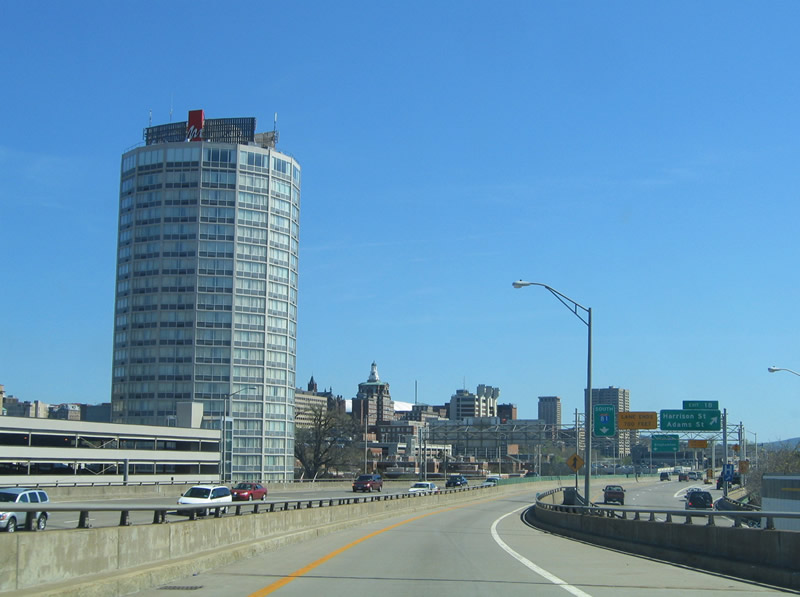
Interstate 81 elevates over the street grid from the brief its partition with Interstate 690 southward.
Onondaga Citizens League will release the findings of its study in February 2009. It is unclear presently what government and transportation officials favor for these projects. In Seattle, the state Governor states that the Alaskan Way viaduct will come down in 2012 whether an alternative is decided upon or not, because of its age and damage sustained from earthquakes. Syracuse’s 1.4-mile viaduct will need to be similarly addressed before age and deterioration deplete funds and increase safety risks.
Sources:
- “Should we follow other cities’ lead and tear down I-81?” Central New York News, October 21, 2008.
- “Rethinking I-81″ – OCL’s Study Blog.

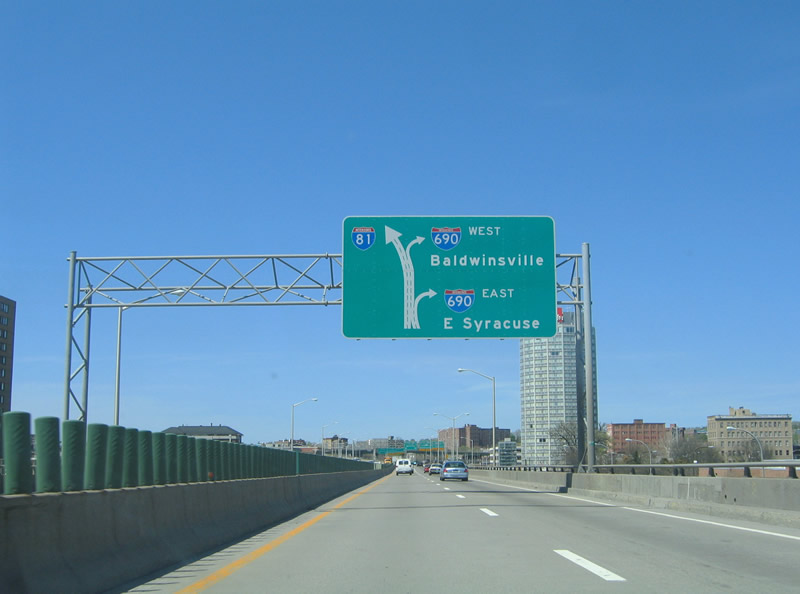
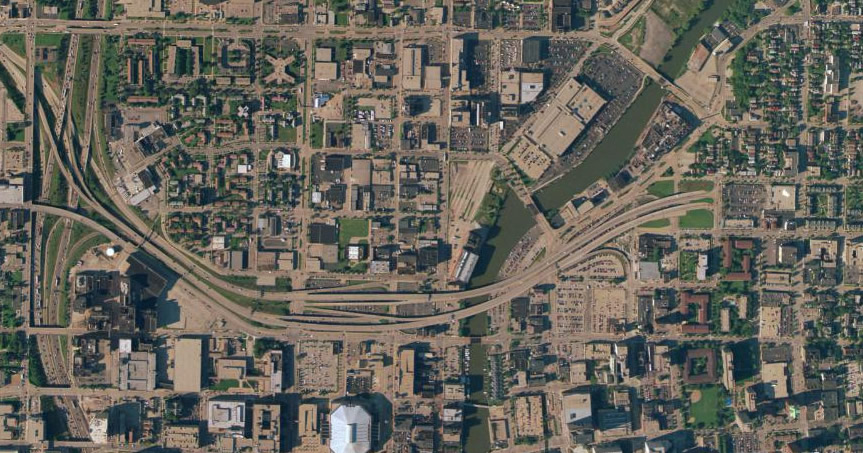
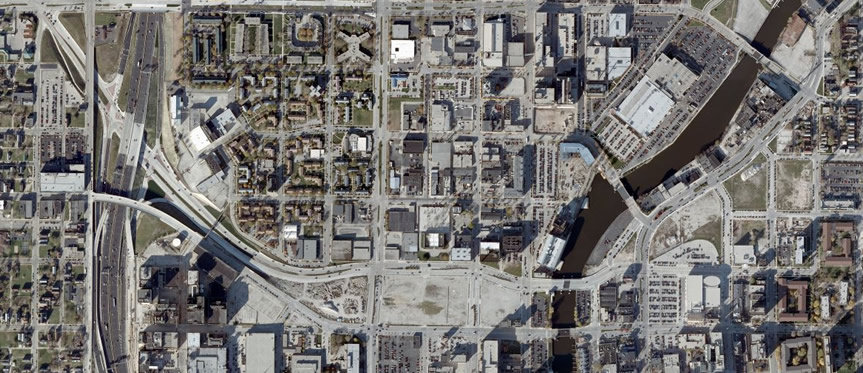
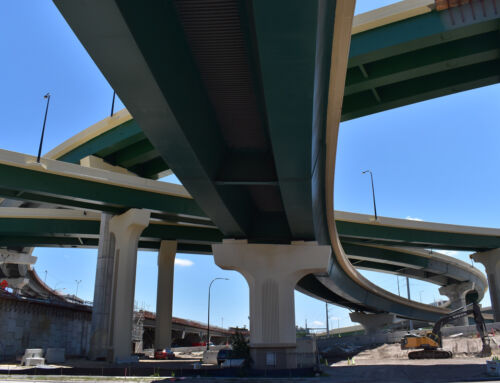
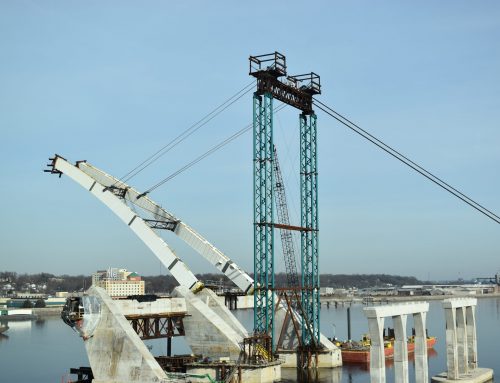
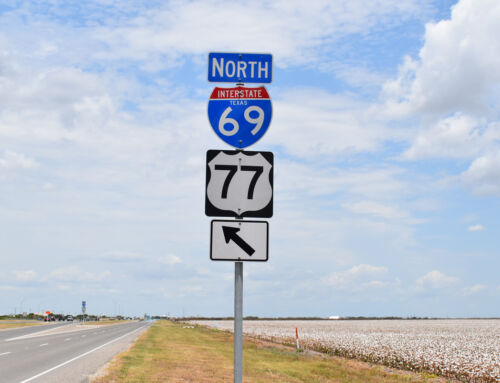
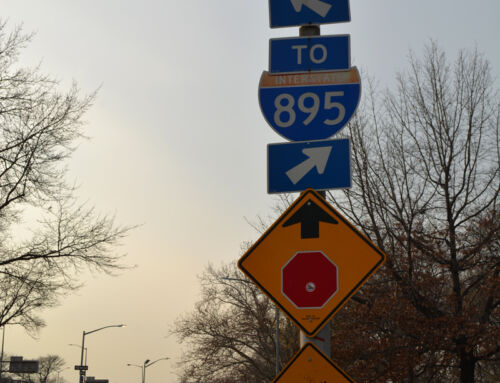
those are excellent photos!
With the lack of money that New York State will be facing over the next few years, I suspect the least expensive option would be chosen. But with the Destiny USA shopping destination coming about where the Carousel Center is now, I think it would be wise to keep I-81 as a through route in downtown Syracuse. My vote would be to depress the freeway and depress I-690 too through Syracuse.
First off, based on extensive experience, I find it doubtful that there’s 100K vehicles per day on the viaduct. NYSDOT’s online numbers suggest about 88K.
Second, I find it doubtful that 40% of that traffic is “through traffic”, even if “through traffic” is strictly defined as just going between the two I-81/481 interchanges. In part because volumes on I-81 outside of I-481 just don’t support that level of through traffic.